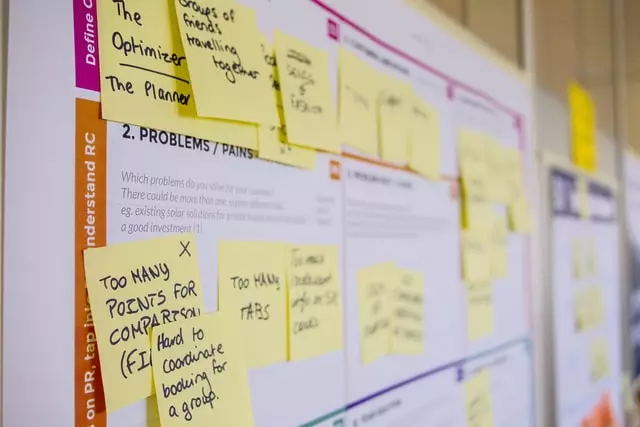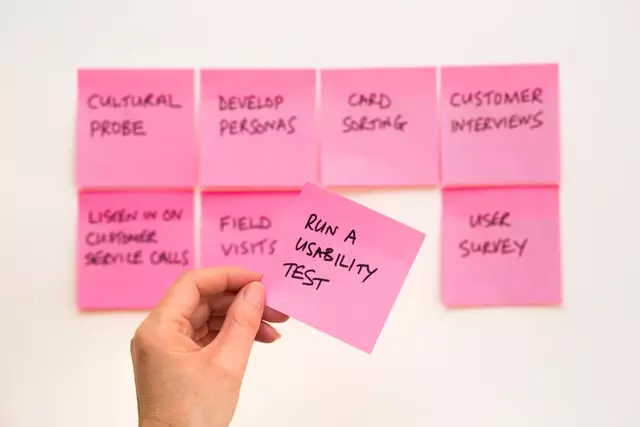Using Agile Content Marketing For Successful Projects
The Agile Methodology is project management with emphasis on the importance of frequent and incremental delivery. It is commonly used in software development. Agile projects are iterative. This means they move through several cycles or phases before reaching completion. The first phase in an agile project is called “sprint,” which lasts one to four weeks.
During this time, teams work together to deliver value for their customers by building new features and fixing bugs. When you combine this methodology with content marketing, you have agile content marketing. This post will explore how you can get the best out of your content marketing campaigns by being agile. This is something that we as a B2B content marketing agency use.
Agile content development
An agile content strategy focuses on keeping the content flowing. That may mean releasing the blog post ahead of the accompanying video or podcast. This, by nature, becomes incremental. An agile content development process allows for projects to progress at all times. You can start by identifying the key components of each project. For most content marketers, it may be doing keyword or topic research. Once done, other parts of the project can progress without interruption or interference from one another.
You can write a piece of content for your blog without waiting for the video to be scripted or recorded. It is worth having some editorial guidelines to ensure everything remains coherent and in line with your brand.
Establishing Processes
Being able to think on your feet is a tremendous asset when marketing. However, there is nothing better than having established processes. It ensures that any team member can carry the work forward if another one isn’t available. The best way to get your processes sorted is by listing every task involved in your content marketing campaigns. These can then be systemised or used as boards to keep track of progress. This way, everyone knows where you are with the campaign at all times. It makes it easier for team members to know where to contribute.
Agile content calendar
Any content marketer will benefit from having an agile calendar. An excellent way to do this is using Trello boards. Each board should contain tasks related to different aspects of your content marketing campaign. These could include:

• Researching keywords
• Writing blogs
• Creating videos
• Scheduling social media posts
The main thing here is to keep things moving forward. If there is something not working, then change it immediately to not waste any more time than necessary.
Have the audience in mind
You are not creating your content for yourself. Adaptability is one of the best things about using the agile framework. As you produce and syndicate your content, you have the opportunity to keep track of results. Change the types of content you are creating based on the feedback received from your audience. Engagement is perhaps the best feedback your audience will give you.
Progressive Content Improvement
Hitting the publish button should not be the end of your content’s life cycle. Your agile process should include revisiting pieces of content to improve on depth or overall quality. That may be in the form of editing for better readability, adding new resources, or updating to include recent information. You can have Trello boards for several stages of content improvement such as:

- Topic Research.
- Content brief.
- Editing.
- Publishing.
- Further editing.
- Resource mapping.
- Resource creation.
- Outreach.
- Social Media syndication.
There is no limit to how many of these you can have. The aim should be to find the sweet spot for your business.
Fostering Collaboration
Agile content marketing fosters collaboration by allowing teams to track what other contributors have done so far. In addition, they can see what needs to be completed next. There is also room for them to add their own ideas into the mix. They don’t need to wait until someone else has finished before starting. Agile content marketing encourages people to take ownership over their part of the project.

Be Open to Adding Another Iteration
When content marketing the agile way, be open to multiple iterations of your content. We encourage you to run several tests on the methods and medium used in each iteration. Over time, you will find a clear indication of what works for your audience and what does not. That allows you to produce more successful campaigns with each iteration. Do not be afraid to experiment. Do not place a ceiling on how well a campaign can do. What if it could be 1% better with a few tweaks? Small differences can make a significant impact on your bottom line.
Quicker Turnaround Times
“Done is better than good when good isn’t done!”- Eric Thomas.
Being able to revisit your work throughout your campaign gives you the freedom to progress. You are less likely to spend time worrying about perfecting any part of your processes at the expense of pushing your content out. An agile approach means more content is released and marketed at all times. Quicker turnaround times allow you to get back to producing great content faster. This helps you stay ahead of competitors who might be doing similar things but slower.
Practical Tips That Move the Needle
You should aim to improve the overall quality of your content during the process of producing and marketing it. More importantly, your content should never stop improving. Revisit old pieces of content as part of your systems.
Allocate tasks to different parts of your team. If you have specific people specialising in a few things, your overall quality will see an uptick. Having generalists across your team will keep things at a mediocre level. Have a member or members that are responsible for specific sections of your Trello board. That breeds accountability! Who is responsible for seeing to the delivery of each task?
Scale your budget to provide your team with adequate resources to produce high quality content. Do not allow resources to become a bottleneck to your agile teams.
Conclusion
We hope this article helped clarify some questions around agile content marketing strategy. It was written specifically for those looking to implement an agile content strategy within their organization. However, we believe that anyone interested in improving their content marketing efforts would benefit from reading through our entire guide.
If you want to create great content, then you must embrace agility. By following the above steps, you can make sure that your content creators and content marketing efforts remain effective and adaptive. Relevant content makes your marketing team’s role much easier.
